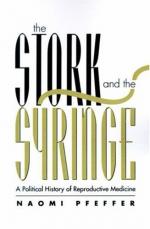|
This section contains 351 words (approx. 2 pages at 300 words per page) |
A pumplike device used for hypodermic or subcutaneous (beneath the skin) injections or to remove liquids by suction, the syringe consists of a tube--usually made of plastic--that is tapered at one end and has a plunger at the other that either creates suction when pulled back or forces out fluid when pushed forward. The syringe may be used for intravenous (going into the veins), intramuscular (into the muscle), or intradermal (between skin layers) injections to administer drugs or vaccines.
The conceptualization of the syringe is thought to have originated in fifteenth-century Italy, but it was not developed for practical use until several centuries later. In 1657, experiments were conducted on syringe-like devices by two Englishmen, Christopher Wren (1632-1723) and Robert Boyle. Dominique Anel, a surgeon to the seventeenth-century army of French King Louis XIV (1638-1715), is usually credited with the invention of the kind of syringe used today, which he devised to clean wounds with suction. The first true hypodermic syringe was created by Charles Pravaz, a French physician, in 1853; it was made entirely of silver and held one cubic centimeter of liquid. Around the same time, Scotsman Alexander Wood devised a subcutaneous injection method, allowing physicians to administer intravenous anesthesia for the first time. An Englishman named Fergusson used a syringe made partially of glass, thus allowing visual monitoring of injections. The all-glass syringe developed by a man named Luer in France in 1869 further reduced the risk of infection.
Today, increased public awareness about acquired immune deficiency syndrome (AIDS) and concern about halting the progress of the deadly human immunodeficiency virus (HIV) has led to the widespread use of disposable syringes, which are used only once and then discarded. In some cities, these syringes have been distributed free to users of illegal, injectable drugs, whose sharing of unsanitary needles containing traces of HIV-infected blood has made them among the most common victims of AIDS. Although many health practitioners and others believe this practice is in the public's best interest, it has met with resistance from those who feel it encourages, or at least communicates, tolerance of illegal drug use.
|
This section contains 351 words (approx. 2 pages at 300 words per page) |


